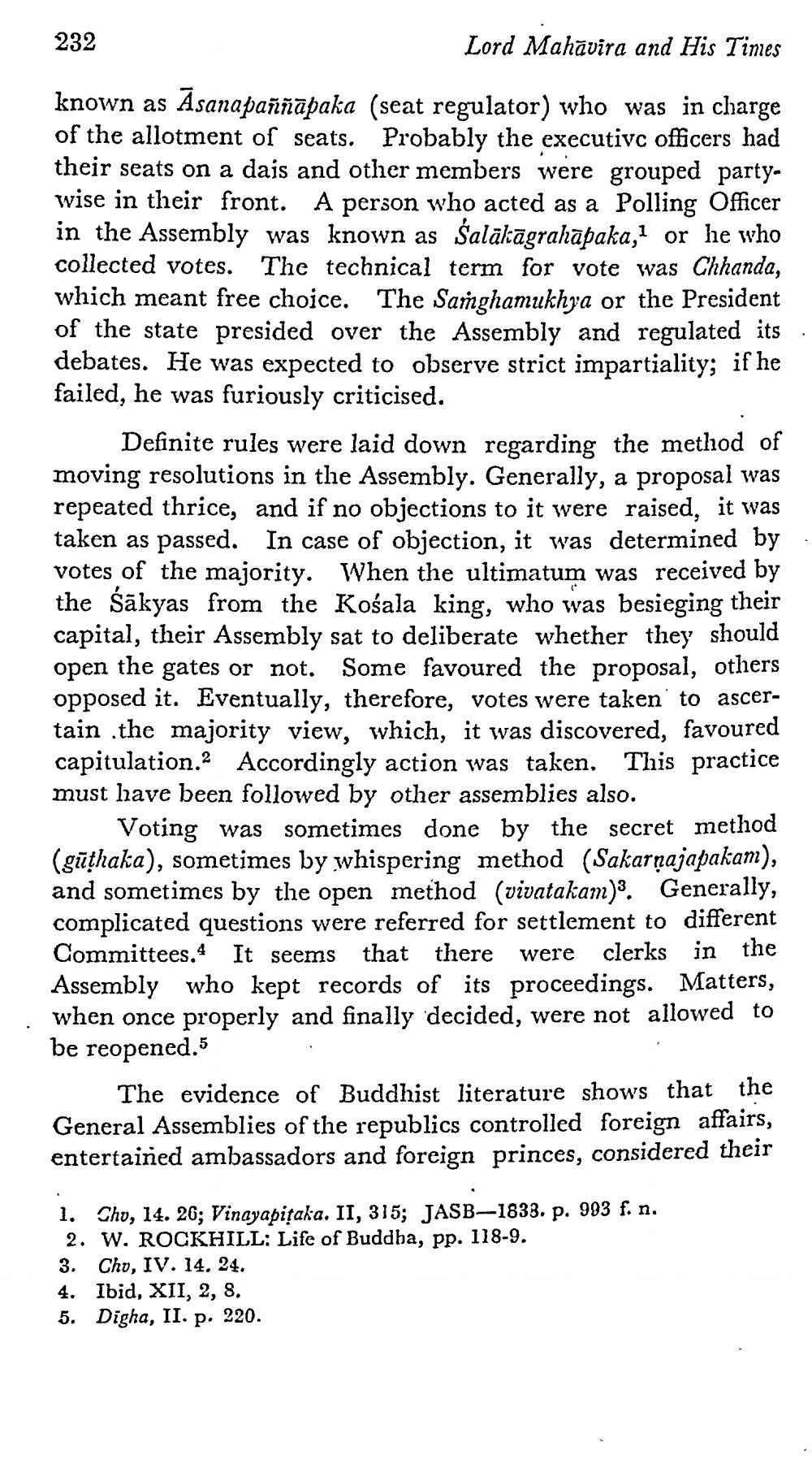________________
232
Lord Mahavira and His Times
known as Āsanapaññāpaka (seat regulator) who was in charge of the allotment of seats. Probably the executive officers had their seats on a dais and other members were grouped partywise in their front. A person who acted as a Polling Officer in the Assembly was known as Śalākāgrahāpaka,1 or he who collected votes. The technical term for vote was Chhanda, which meant free choice. The Samghamukhya or the President of the state presided over the Assembly and regulated its debates. He was expected to observe strict impartiality; if he failed, he was furiously criticised.
Definite rules were laid down regarding the method of moving resolutions in the Assembly. Generally, a proposal was repeated thrice, and if no objections to it were raised, it was taken as passed. In case of objection, it was determined by votes of the majority. When the ultimatum was received by the Sakyas from the Kośala king, who was besieging their capital, their Assembly sat to deliberate whether they should open the gates or not. Some favoured the proposal, others opposed it. Eventually, therefore, votes were taken to ascertain the majority view, which, it was discovered, favoured capitulation. Accordingly action was taken. This practice must have been followed by other assemblies also.
Voting was sometimes done by the secret method (guthaka), sometimes by whispering method (Sakarṇajapakam), and sometimes by the open method (vivatakam)3. Generally, complicated questions were referred for settlement to different Committees.1 It seems that there were clerks in the Assembly who kept records of its proceedings. Matters, when once properly and finally decided, were not allowed to be reopened.5
The evidence of Buddhist literature shows that the General Assemblies of the republics controlled foreign affairs, entertained ambassadors and foreign princes, considered their
1. Chu, 14. 26; Vinayapitaka. II, 315; JASB-1833. p. 993 f. n. 2. W. ROCKHILL: Life of Buddha, pp. 118-9.
3.
Cho, IV. 14. 24,
4. Ibid, XII, 2, 8.
5. Digha, II. p. 220.




